2014 Zero SR Review

Taking a spin on Zero's electric hot rod
We say it every time we test one of these things, but electric motorcycle technology really is advancing at an astonishing pace. For proof of this, look towards the Isle of Man TT, where the fastest e-bikes are averaging more than 100-mph laps – something impossible just five years ago. In fact, it took gas bikes over 50 years to do a “ton up” lap. E-bikes? Four. How’s that for progress?
2014 Zero SR
| Engine | 18/20 |
| Suspension/Handling | 11/15 |
| Transmission/Clutch | 10/10 |
| Brakes | 8.5/10 |
| Instruments/Controls | 4/5 |
| Ergonomics/Comfort | 8/10 |
| Appearance/Quality | 8/10 |
| Desirability | 9/10 |
| Value | 4/10 |
| Overall Score | 80.5/100 |
More pictures of the 2014 Zero SR
Speaking of fast, Zero gave us the keys to the $16,995 Zero SR, the hot-rodded version of the standard S model, and equipped it with the optional $2495 Power Tank. Essentially an additional 2.8kWh module, with it, the S, DS, and SR models have the ability to travel up to 171 miles, says Zero. After just a few miles with it I gave you a first ride teaser with initial impressions. We’ve put a few more miles on it now and here are our thoughts. Spoiler alert: we really like it!
Silent Assassin
We would be doing the SR a disservice starting anywhere other than its performance. Many times we wax poetic about the pulling power and stump-yanking torque of electrics, but let’s add some perspective. In our 2012 Hyper sportbike comparo between the Kawasaki ZX-14R and Suzuki Hayabusa – two of the fastest production motorcycles on the planet – the Kawi put out 109.3 ft.-lb. while the Busa made 101.7 ft.-lb. The SR’s motor, with its upgraded 660-amp (240 amps more than the standard S) motor controller, bests the Suzuki with 106 ft.-lb. rated at its shaft! Of course, both the ZX and Busa make almost thrice the horses than the SR’s measly 67 (188.1 and 171.0 for the Kawi and Suzi, respectively), but in a (short) stoplight-to-stoplight drag race, the Zero has a real shot at embarrassing the two gas bikes.
After handing off the SR to Ural Editor Tom Roderick for a romp up the hills, he came back beaming: “This thing is crazy fast! But without the engine noise, I lose my perception of speed when I enter a corner. It’s all zen-like until you realize you’re in hot and need to shave some speed.”
Higher-temp magnets help the air-cooled motor deal with the increased power, but while the performance boost is the most dramatic change in the SR, it, along with the rest of the Zero line get a few more upgrades for 2014. A new bespoke gauge cluster comes on all the new bikes. The updated unit looks more modern, and provides an array of useful information the previous dash lacked. One attribute I found particularly useful was the remaining range left before the battery was drained. I actually saw it increase with the constant stop-and-go of a typical photoshoot, the regenerative braking adding back a tiny bit of juice each time.
As the raciest bike in the Zero lineup, the upgrade to 43mm forks (from 38mm) on the entire Zero range is a welcome sight to see. Compression and rebound damping are both adjustable, and in your average riding conditions, the ride feels firmer and more compliant but not harsh by any means. If anything, the previous suspenders were too soft. Even in the canyons, the fork gave positive feedback; however, the SR’s two limiting factors are its shock and footpegs. Even in its firmest settings, the shock felt underdamped for a spirited ride. This may have been a self-preservation measure, as the standard, non-adjustable pegs don’t require much lean angle before touching down, and the stock IRC-01R tires are adequate at best.
“The changes to the suspension were noticeable and appreciated in daily use,” comments Associate Editor Evans Brasfield, “but I didn’t get a chance to flog the SR in the canyons like Troy and Tom. Consequently, I didn’t experience the shock issues that Troy noticed.”
Thankfully for all of us, the SR comes with a (abnormally long) steel-braided brake line that feeds a Nissin two-piston caliper, biting on a single 313mm disc. Braking power and feedback is exceptional, with great feel at the lever. The rear brake features a J-Juan caliper with a 240mm disc. Zero says feel has been improved, and while I’d agree with that statement having ridden past Zeros, Roderick still equated the feel to “two pieces of wood squeezing the disc.”
As noted in the first ride teaser, the 45-lb Power Tank, situated so high in the chassis, bumps the SR’s curb weight to a portly 452 lbs. This doesn’t do it any favors when transitioning through corners. The handlebars are at a suitable width to give decent leverage, but I’d like to try the bike with even wider bars or without the Power Tank. This additional weight is especially noticeable simply wheeling the bike around the garage.
Another oddity is the SR’s slow-speed handling. At parking lot speeds, the front feels heavy and clumsy. Its 24-degree rake is identical to a Yamaha YZF-R6, but at 80mm, the SR’s trail is a massive 16.5mm less than the Yamaha.
What’s It Like To Live With?
So we’ve established the Zero SR is quite good in terms of speed and acceleration and, with a few simple upgrades, could be a great handling motorcycle, too. In everyday use, we’re still pleasantly surprised and impressed with the SR. Around town, where an e-bike is most efficient, the SR easily shoots away from cagers at lights and is narrow enough to dart between them when things get congested.
“The SR’s increase in power is obvious the first time you roll on the throttle,” notes Brasfield. “For those who are unfamiliar with e-bikes, having maximum torque available instantly is intoxicating and renders other traffic impotent around town.”
Save for the whine of the motor, which is cool in a futuristic sci-fi sorta way, the Zero is eerily quiet, too. At a stop, conversations can happen at a normal volume. When riding, the lack of engine noise means you can focus on other things, like line choice, or braking points. Or you can simply take in the surrounding environment around you. It’s quite refreshing in its own way.
As opposed to a gas bike, freeway stints are an e-bike’s achilles heel. Of the three ride modes (Sport, Eco, Custom), changeable on the fly via the thumb button a typical start button would reside, Sport mode easily allows you to keep up with traffic and pass others with ease.
Eco mode drastically scales back the power, however, and while it’s sufficient for street duties, that’s not so on the highway. The limited power makes it difficult to pass other vehicles, and a speed limiter is placed at 71 mph to save juice. Custom, meanwhile, incorporates whatever changes to the bike’s top speed, max torque, and regenerative braking are input through the Zero app on your smartphone.
The Zero app does more than just allow the user to change the bike’s performance parameters. For those who really want to dig deeper into the bike’s performance, it provides information like the average watt hours per mile and total kilowatt hours used. When charging, it can provide the charging amps and wattage as well. And for those who like to get technical, there’s a function to email the bike’s logs. This can prove useful if wanting to track the performance of the bike after making a change.
With the addition of the Power Tank, we slowly learned to retrain our brains to stop worrying about range anxiety and just start riding. The entire time we had the bike we never ran it out of juice. On one particular trip we ran the SR for 70 miles, with the charge meter still showing 37% battery left and 37.0 miles remaining. We’ve seen others achieve even better results. Of course, your mileage may vary based on your riding habits and conditions. And in normal everyday situations, we’d adjust to simply plugging the bike in whenever we stopped, like a cell phone. You’d be surprised how many plugs are available at the places you frequent.
“The increased range (yes, at a hefty price) moves the SR into the category of a motorcycle that can be used as more than just a commuter or errand runner,” Brasfield notes. “While it still requires some planning, you could easily have a fun Sunday ride in the mountains with the additional battery power.”
Of course, the big weakness for e-bikes is charge times, and the Zero is no different. With a standard 110v wall outlet, recharging the SR from a totally drained battery could take in excess of eight hours. However, part of adapting to electric mobility is taking advantage of the charging infrastructure currently available. With the optional CHAdeMO accessory, recharging to 95% capacity is possible in an hour. Savvy owners will also invest in other adapters, like the more commonly used (at least in America) J1772, which opens up charging opportunities considerably in major metropolitan areas.
The Bike Of The Future?
Don’t worry gas bike purists, the Zero SR isn’t going to dethrone your favorite dino-powered motorcycle any time soon. Besides the range, the exorbitant cost is simply too much for many to accept. However, judged purely from a performance aspect, the Zero SR is not one to be taken lightly. It goes and stops as well, if not better than, anything else out there. It could use a diet and better components, but the SR is a positive sign of things to come for the e-bike world.

Troy's been riding motorcycles and writing about them since 2006, getting his start at Rider Magazine. From there, he moved to Sport Rider Magazine before finally landing at Motorcycle.com in 2011. A lifelong gearhead who didn't fully immerse himself in motorcycles until his teenage years, Troy's interests have always been in technology, performance, and going fast. Naturally, racing was the perfect avenue to combine all three. Troy has been racing nearly as long as he's been riding and has competed at the AMA national level. He's also won multiple club races throughout the country, culminating in a Utah Sport Bike Association championship in 2011. He has been invited as a guest instructor for the Yamaha Champions Riding School, and when he's not out riding, he's either wrenching on bikes or watching MotoGP.
More by Troy Siahaan








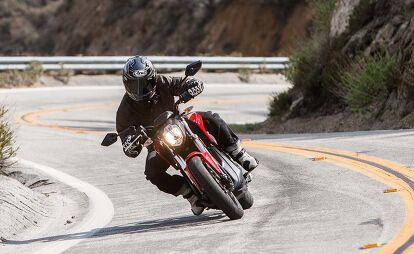



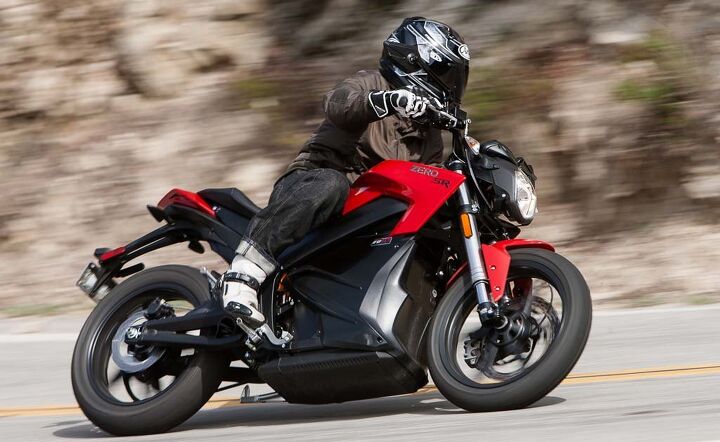














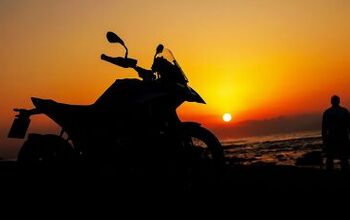







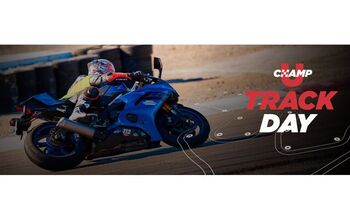

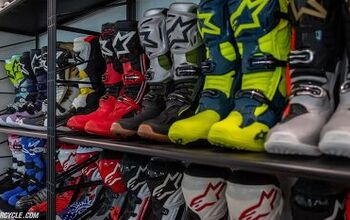
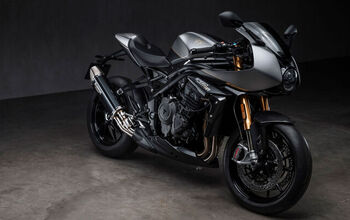




Comments
Join the conversation
I knew it had to be a Kawasaki. They make the best and most reliable motorcycles. And, they are QUIET!! They are the best!
Sadly you can remove the "With the optional CHAdeMO accessory, recharging to 95% capacity is possible in an hour." from the article, since Zero have removed this accessory from the bikes. Because a few CHAdeMO charging stations in the US was not able to go down to 50volts. So they where incompatible. It's really sad since all the CHAdeMO charging stations here in Europe support the bike and they are everywhere. I really hope they turn on this. It limits the use of my bike quite considerably whit no fast charing option.